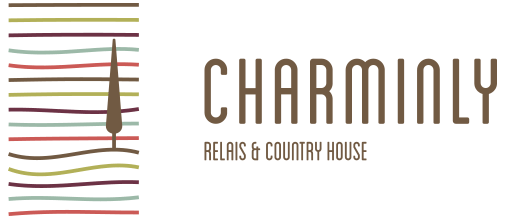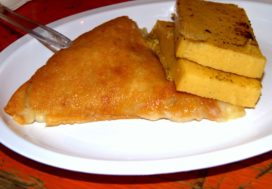Bisi in tecia
For those who don’t know, bisi are the peas while tecia means pot. Bisi in tecia is a traditional dish and is used during convivial dinners and lunches in Friuli’s families as a side dish for the roasted meat.
The bisi in tecia are prepared with a traditional fry with garlic and onion, to which is added the bacon cut into cubes. Once the fry becomes golden, it’s time to pour the bisi. Then everything is mixed and cooked for some minutes, while adding a few vinegar drops.

Bisi in tecia foto giallozafferano
Cjarsons
The cjarsons, originally from the Carnica Alps area have rapidly spread also in the Friuli lowlands. They’re made with a potato based pasta that has to be filled like a raviolo or an agnolotto, and it is characterized by a flavor that is both salty and sweet.
The filling, basing on the local recipes, can be done with jam, eggs, dry cookies, parsley, grappa, rhum, ricotta cheese, spinach, cinnamon, cocoa, dark chocolate, raisins, chives and milk.
They are baked in salt water like the ravioli, and once drained they’re flavored with smoked ricotta cheese and melted butter. The butter can be replaced by the ont, a kind of butter that was once widely used in the carnica kitchen because the normal butter couldn’t be stored for a long time. In the past cjarsons was considered a poor dish, but today it is sophisticated.
Gnocchi di prugne
The gnocchi di susine are appreciated in Goriziano and Trieste, they’re part of that big group of filled gnocchi that are still very appreciated. They’re big gnocchi made with flour and potatoes, filled with half plum without the core, and in the free space there’s a filling made by bread crumbs and melted butter, already flavored with cinnamon and sugar.

Gnocchi di susine foto dissapore
Muset e braude
The musetto, that is called meset in Veneto and Friuli, is a kind of sausage inspired by cotechino. While in cotechino you can find many kinds of meat, just one kind of meat is used to prepare this specialty, and it is the meat deriving only by pig snout.
It’s a traditional winter dish served with bruade. Usually, it is consumed after a short period after the bagging. To make the dough, they have to grind the snout meat with rind, pepper and salt. So it is bagged using a gut that is slightly smaller than the ones used to make salami, but a little bigger then the ones used to make sausages.
It is cooked in water and is usually eaten once is boiled. The cooking water has to be changed at least for two times. Another way to cook it is with the ashes or in water-bath, as the salami.



